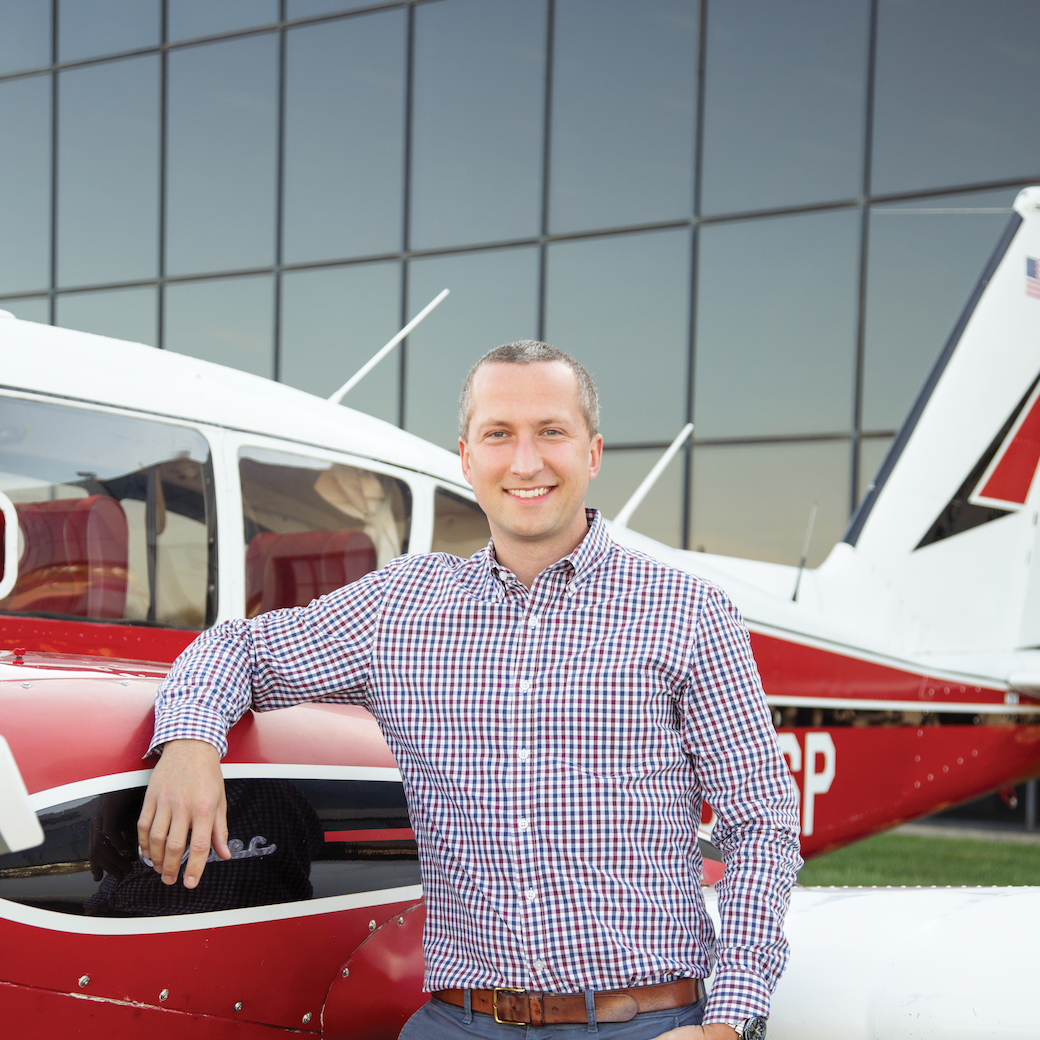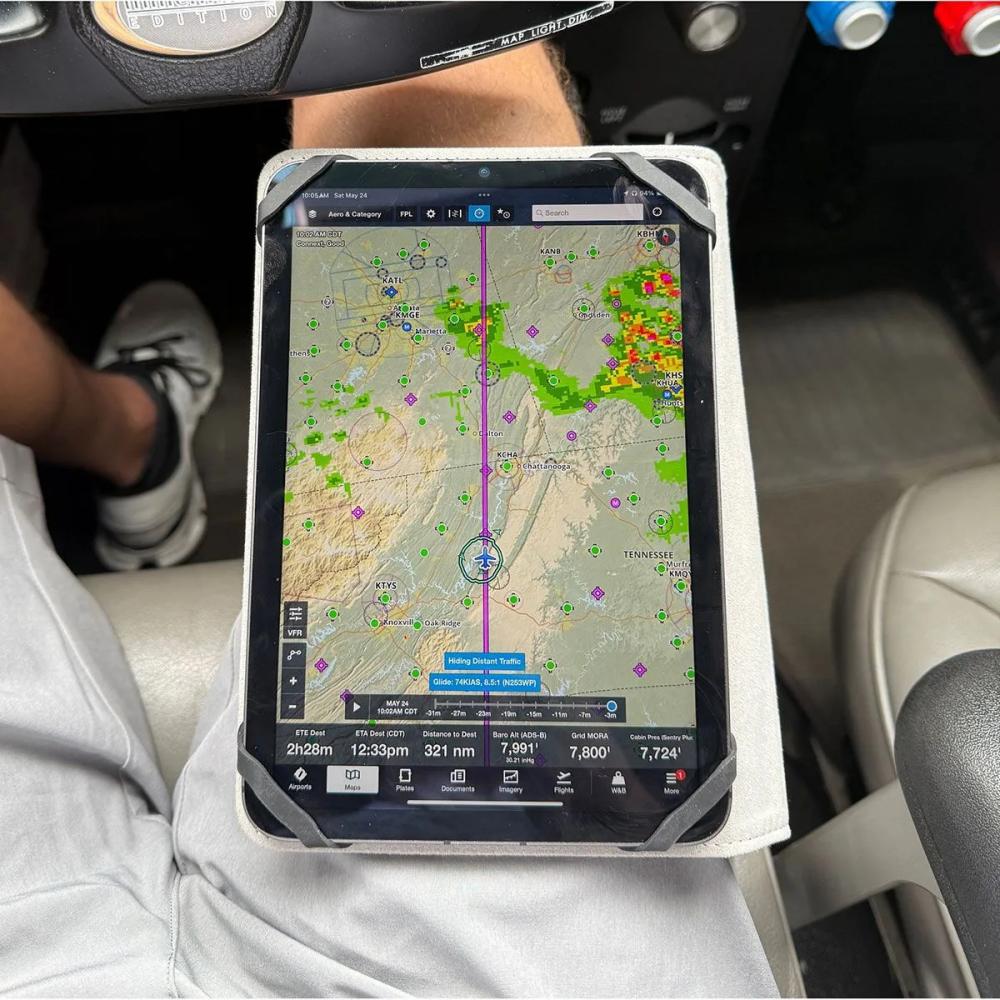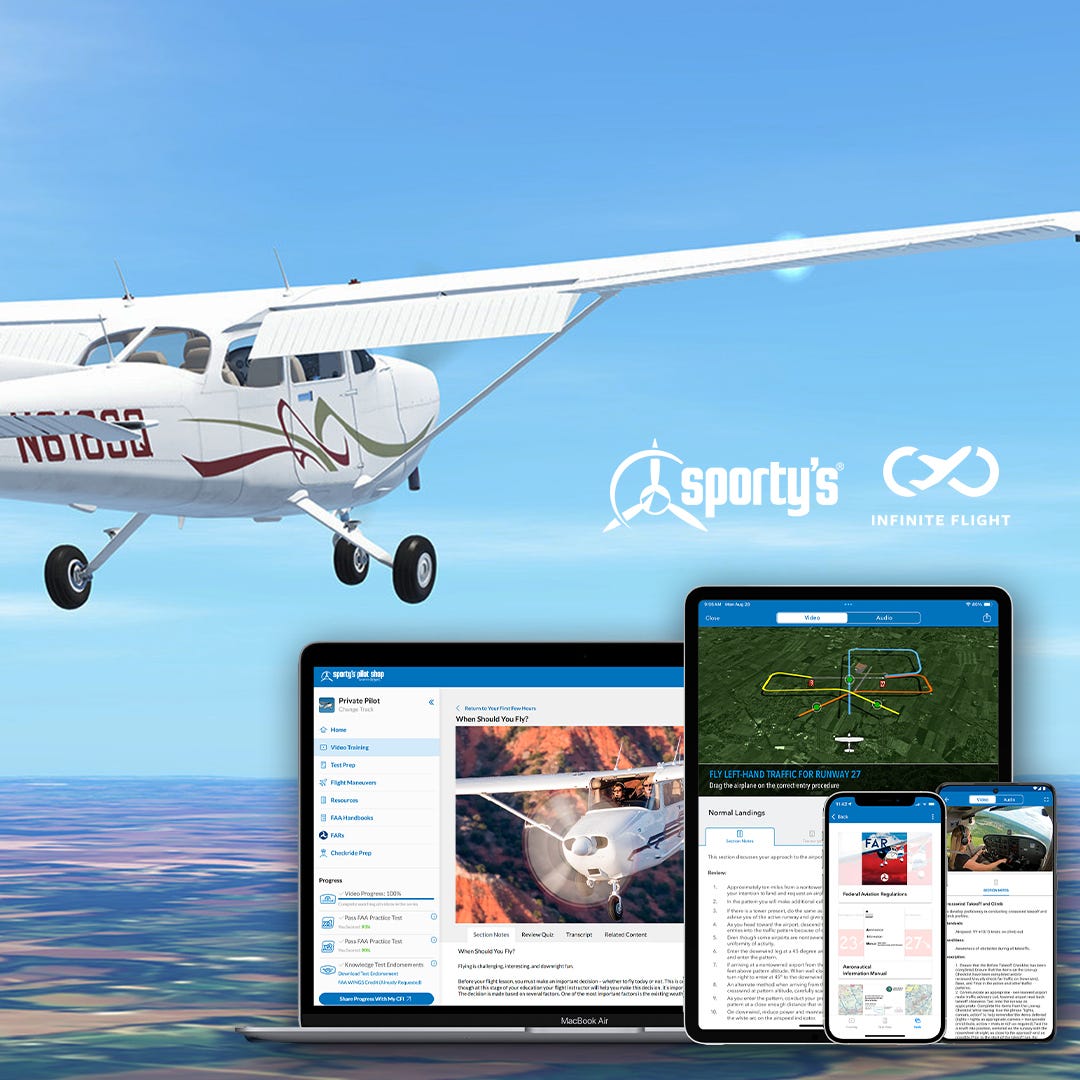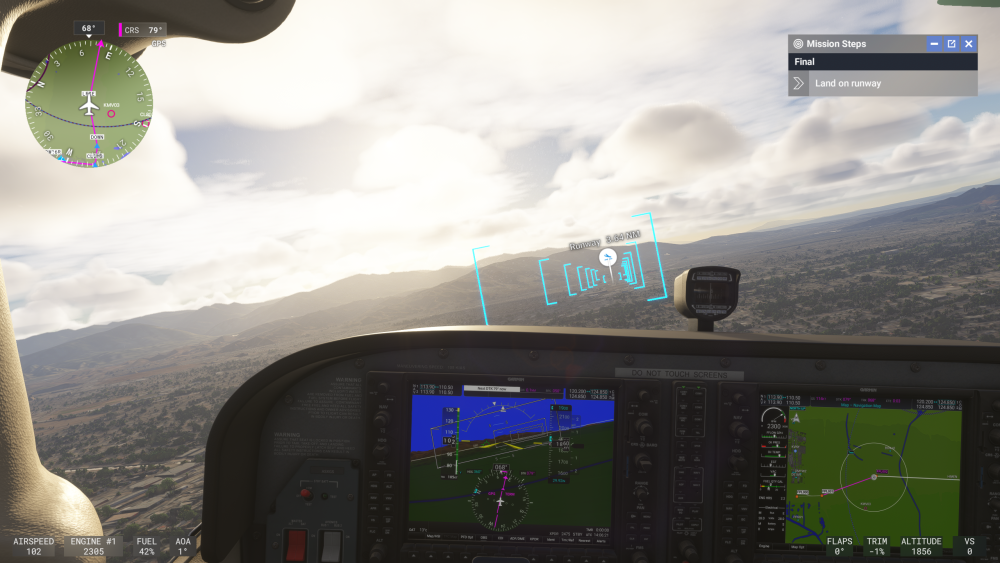The Home Flight Simulation market has experienced a unique, maybe even rollercoaster ride over the last few years. At the E3 conference (Electronic Entertainment Expo) in June of 2019, Microsoft announced that a new Flight Simulator was in the works. The previous program was released almost 13 years prior, so the community was hungry for new simulation software. At the same time, a former product manager from Saitek/Logitech was launching a new brand and delivering a yoke with a honeycomb design as the logo in late 2019. And within six months of both these announcements, the world was quarantined and it was socially acceptable to stay inside all weekend and fly the digital skies. Flight simming was mainstream. Microsoft took advantage of the aligning stars and launched (many would argue prematurely) Microsoft Flight Simulator 2020—and a new chapter for the flight sim community started. But how did this benefit the aviation community?
Flight Sim Hardware
The previously mentioned brand, Honeycomb, realized there was a gap in the market for home sim users who wanted something in between “good enough” to “that’s amazing.” Redbird Flight Simulators covered the top of the price range with parts that look like they’re pulled right out of a Cessna 172. Logitech and CH Products played the volume game and covered the lower-priced yokes but they could leave you wanting more. Honeycomb successfully met in the middle with both price and feature set. The Honeycomb Alpha Yoke uses bungee cables for tension and resistance, rather than the previously adopted metal springs (used in Logitech, CH, etc.). The community received this “authentic” yoke with open arms in the middle of 2019 and the rest is history.
The Bravo Throttle Quadrant kept the momentum going and provided an interchangeable, six-lever throttle body, a trim wheel, flaps lever, gear position lever, AND autopilot keys. Piecemailing those features together would have cost 2-3 times as much as the Bravo when it debuted. The Honeycomb Alpha and Bravo leveled up the playing field for all hardware producers that greatly benefited consumers and digital (as well as physical) pilots. We believe that the flight sim market wouldn’t be nearly as advanced as it is today if Honeycomb’s tide hadn’t raised all the boats.
It’s not just Honeycomb. Here are some additional hardware options that benefit the aviation community:
-
Logitech Flight Sim Joystick - Not everyone flies with a yoke or has ample desk space. This simple stick is great for taildragger pilots, while also covering the important inputs in a small footprint. Pitch, Roll, Yaw and Throttle are all easily configured, as well as a dozen other buttons for your flying preferences. Lastly, it’s under $50 and a great option for getting started in flight sim.
-
Flight Simulator Headset - We like to say “sim as you fly.” All pilots fly with a headset today, and it makes sense to bring that realism into a flight simulator. A headset will signal a sense of realism to your brain, but more importantly it will allow you to work on your communication skills. You can even talk to real-life controllers or pilots with the right software add-ons (covered in the services section).
-
TrackIR 5 - A common question we receive is “what size monitor do I need for my simulator?” There are plenty of 40- or 50-inch “gaming monitors” out there that’ll cost you more than a PC itself would. TrackIR 5 provides a tracking antenna that sits on any hat and allows your POV in the simulator to change as you turn your head. No longer will you need multiple monitors or wrap-around screens to get a large view—you can multiply a monitor's performance with the head tracking provided by TrackIR 5.
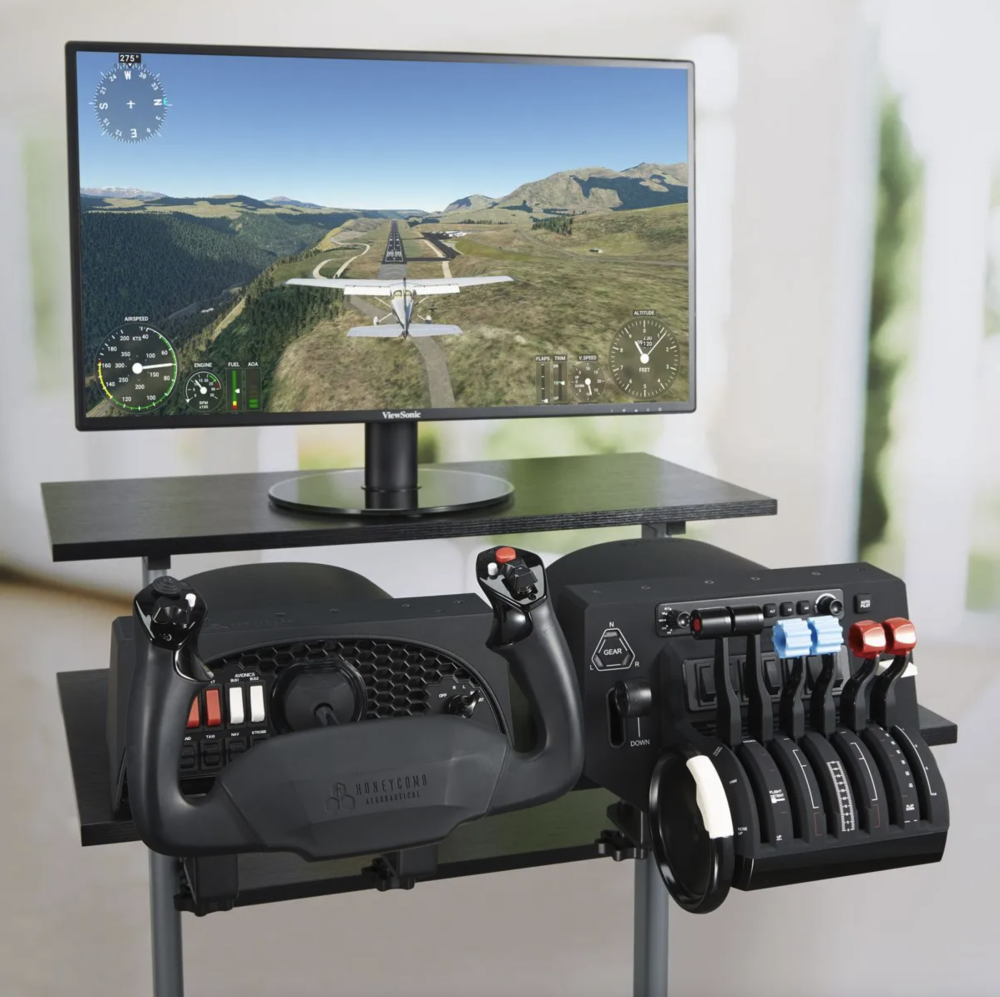

Flight Sim Software
In 2025 there are three desktop flight simulator software programs worth considering: Microsoft Flight Simulator 2020 or 2024, X-Plane 12, and Prepar3D. Each has their strengths and weaknesses, and appeals to aviators at different levels of training or experience.
Microsoft Flight Simulator 2020 was the catalyst that drove a ton, if not the majority, of flight sim enthusiasm at the turn of the decade. It kept the momentum going with monthly updates, new aircraft, and a highly active user network featuring “Community Fly-In Fridays” at 2:00PM ET every Friday on their Twitch channel. MSFS 2020 and 2024 (a separate program, not an update to the original) are great options for someone getting started in flight simulation and figuring out digital flight. The user interface and interactivity are welcoming for new users and each program has about two dozen lessons ranging from “sim controls” or “normal takeoff” up to “flying an ILS.” MSFS 2020 and 2024 are great for digital sightseeing or for those who want to get started in simulation, but the aerodynamics of their aircraft get a B grade. Still great, but there are other options out there.
X-Plane 12 is the latest iteration of the software program Laminar Research develops. It’s a less flashy but higher performance simulator when compared to Microsoft’s program. X-Plane 12 additionally offers a Free Demo version so you can test out your PC and make sure it can handle the program prior to purchasing it—and it also works with Mac. The aerodynamic models in X-Plane are better, in our experience, and are better suited for someone wanting to fly by the numbers in an aircraft or practice precision maneuvers. X-Plane is great when it comes to instrument training too, with granular weather settings and advanced avionics logic. For a more seasoned pilot, X-Plane 12 is a great option.
Prepar3D is a flight simulator program offered by Lockheed Martin, with a strong emphasis on professionalism and military aircraft. It was born of a program Microsoft developed in 2007 but never brought to market, and has gone through countless updates and improvements in the last 18 years. Of the most experienced simulator pilots I know, Prepar3d is a common program among them. It offers a task oriented or mission focused design to keep users challenged and constantly flying. They also offer three separate tiers of the program: the introductory personal license, a professional license with university and military level use approval, and the top tier professional plus license that blends in AI behaviors in scenarios, multi-screen functionality, Prepar3D’s Instructor Operator system, and more. Prepar3D is great for anyone who has logged many hours in a simulator and is looking for a more scenario-based type of flying.
Additional software options that benefit the aviation community:
-
Infinite Flight - This is a mobile simulator program that is great for phones or tablets. IF is a solid program for practicing a lot of checklist flows, autopilot usage, or navigation. I really enjoy that I can connect IF to ForeFlight on another tablet or phone and explore ForeFlight’s latest updates or new features.
-
EFB Connection (ForeFlight or Garmin Pilot) - In the day of ADS-B, most pilots fly with an Electronic Flight Bag for all their charts, books, plates, and even a moving map. You can easily connect ForeFlight or Garmin Pilot with any of the simulator programs we covered.
-
TakeFlight Interactive - TFI is a scenario based training program that works alongside all three simulator programs. There are 23 lessons that each offer a training, evaluation, and challenge phase that critique your flight while it’s happening. One of our favorite features is the granular grading TFI provides for individual maneuvers, with easily recognizable areas that need improvement.


Flight Sim Services
A lot of seasoned pilots will look for additional ways to improve the realism of a home simulator, and for good reason. If a simulator can help you strengthen weak areas in your flying and save you a training lesson or two, that’s hundreds of dollars saved with a home computer. We like to recommend the following services to active pilots as a way to stay sharp without getting physically airborne.
Communication can be an intimidating early phase of flight training, as well as one that deteriorates quickly if you find yourself a rusty pilot. Simulated flying in the 21st century offers multiple avenues towards keeping your radio communication skills where they need to be. VATSIM is a great group of digital pilots and controllers who are able to connect and simulate real world communication. At your home desk you can talk to another user hundreds of miles away and get approval to fly into airspace, run a radio check, or receive a clearance. If you’re looking for added realism, PilotEdge is a network of real life air traffic controllers providing 15 hours of radio coverage to sim pilots. The short, concise relays we experience in the airplane carry over to PilotEdge… well that’s because it’s those same controllers we speak to who are on the other end of our sim transmissions. This is a great way to reduce, if not eliminate, communication intimidation or errors that many student pilots deal with.
Digital flight instruction is another way to level up your simulator's value. Flight Sim Coach is a group of active instructors who have the ability to connect to your computer and screen share with you while you fly. They’re able to offer assistance in the early stages of using a simulator (technical assistance, introductory jumpstarts, how to take off and climb in a Cessna 172) as well as the more advanced, task-rich training modules (Instrument Proficiency Check, G1000 training course, helicopter training). Their instructors offer flexible appointment times and are great resources to pilots in training.
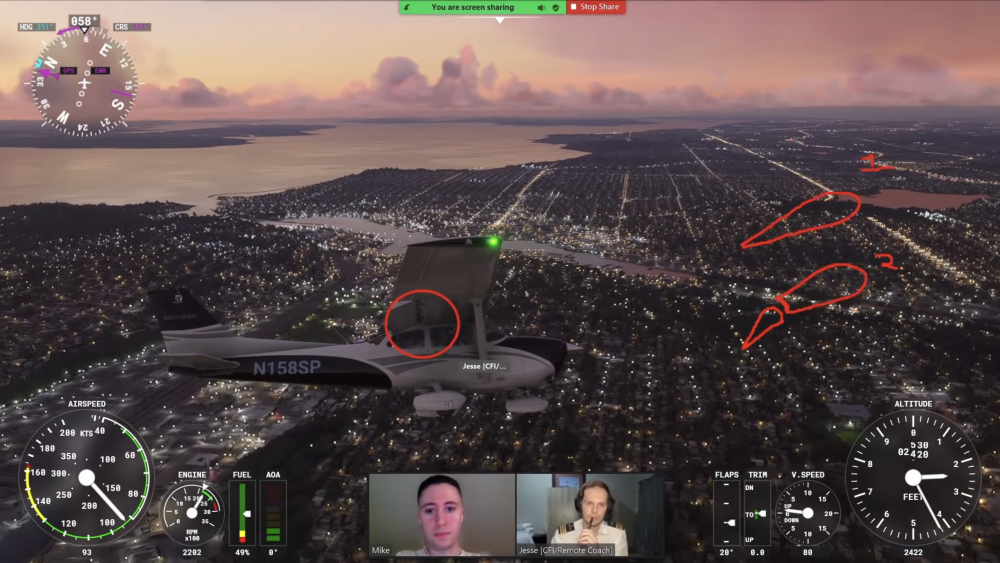

Conclusion
Today’s flight simulators offer hundreds or maybe thousands of areas where they can assist a budding pilot to improve their flying skills and make flight training more efficient. During my training it was common for students to put a poster of an aircraft’s cockpit on a wall and run through checklist memory items. I would simulate turning on a fuel pump, enriching the mixture, and turning the mags to start when I was running through an engine out mental scenario. But I would have to assume what would happen from my inputs. Today, we can get real time feedback from a scenario like this, or any other scenario we can dream up, using a home simulator. Right now is a great time to fly with a simulator and today’s generation of pilots have a potent flight training tool that previous generations couldn’t have fathomed.
Additional Flight Simulator Content:


